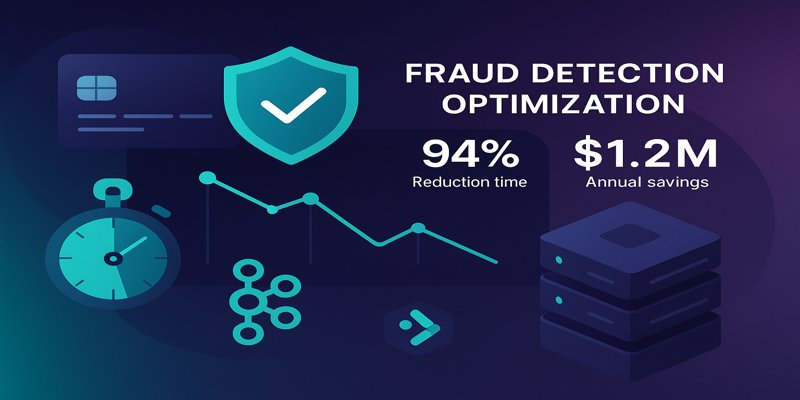
The Problem with Reactive Monitoring
Traditional monitoring systems work with static thresholds and alerts that trigger when it's already too late. This results in:
- Useless alerts: 70% false alarms that train teams to ignore them
- Late detection: Problems discovered when they already affect end users
- Reactive resolution: Teams in constant "firefighting" mode
- Hidden costs: Losses from unexpected downtime
What are Predictive AI Monitoring Agents?
They are intelligent systems that use machine learning to:
🔮 Anomaly Prediction
Detect patterns indicating future problems with 2-48 hours advance notice
🧠 Continuous Learning
Automatically adapt to changes in traffic patterns and behavior
⚡ Automatic Actions
Execute predefined responses or adjust resources proactively
🎯 Smart Alerts
Contextualize alerts with root cause and action recommendations
Architecture of an AI Monitoring Agent
The implementation of a predictive monitoring agent is based on a modular component architecture that works together:
1. Real-time Metrics Collection
- Temporal buffer: Sliding window of historical metrics
- Sampling frequency: Configurable according to needs (typically every second)
- Key metrics: CPU, memory, disk I/O, network traffic
- Efficient storage: Only relevant data for predictive analysis
2. Machine Learning Engine
- Detection algorithms: Isolation Forest, LSTM, Autoencoders
- Continuous training: Model updates with new patterns
- Dynamic thresholds: Automatic adjustment based on historical behavior
- Cross-validation: Prevention of false positives
3. Prediction and Alert System
- Anomaly score: Continuous evaluation of deviations
- Estimated failure time: Prediction based on trends
- Enriched context: Probable root cause and correlations
- Recommended actions: Specific mitigation suggestions
Typical Technology Stack
Success Case: Fintech Platform with 500M+ transactions/month
Client: Leading digital payments platform in LATAM
Problem: Unexpected outages during transaction peaks generating losses of $50,000 per minute of downtime.
Solution implemented:
- AI agents analyzing 200+ metrics in real-time
- ML models trained with 2 years of historical data
- Predictive auto-scaling 30 minutes before peaks
- Contextual alert system with automatic root cause
Results achieved:
- 🎯 Improved uptime: From 99.2% to 99.97%
- ⚡ Early detection: 89% of problems detected 45+ min before
- 💰 Annual savings: $2.4M in avoided downtime costs
- 📉 False alarms: 78% reduction
- 👥 Team productivity: +40% by eliminating reactive work
Types of AI Agents for Different Scenarios
1. Infrastructure Agents
- Objective: Monitor servers, containers, databases
- Key metrics: CPU, memory, I/O, network connections
- Predictions: Resource saturation, hardware failures
2. Application Agents
- Objective: Monitor application and API performance
- Key metrics: Latency, throughput, error rate
- Predictions: Performance degradation, endpoint saturation
3. Business Agents
- Objective: Monitor KPIs and business metrics
- Key metrics: Conversions, transactions, engagement
- Predictions: Sales drops, abandonment patterns
Step-by-Step Implementation
Phase 1: Data Collection (2-3 weeks)
- Identify critical metrics for the business
- Configure application instrumentation
- Establish real-time data pipeline
- Create historical data warehouse
Phase 2: Model Development (3-4 weeks)
- Exploratory analysis of historical patterns
- ML algorithm selection and training
- Validation with test data
- Dynamic threshold definition
Phase 3: Deployment and Tuning (2-3 weeks)
- Deployment in staging environment
- Integration testing and stress testing
- Alert and dashboard configuration
- Operations team training
Recommended Technology Stack
Metrics Collection
- Prometheus + Grafana: Robust open-source stack
- DataDog: SaaS solution with built-in AI
- New Relic: APM with predictive capabilities
Machine Learning
- Python + scikit-learn: For traditional models
- TensorFlow/PyTorch: For advanced deep learning
- MLflow: For model lifecycle management
Orchestration
- Apache Kafka: For event streaming
- Kubernetes: For scalable deployment
- Redis: For low-latency cache
ROI and Quantifiable Benefits
Our clients have consistently reported:
Conclusion: The Future is Predictive
AI agents for predictive monitoring are not just an incremental improvement - they represent a paradigmatic shift towards proactive and intelligent operations.
In a world where every minute of downtime can cost thousands of dollars, the ability to predict and prevent problems before they occur is not a luxury, it's a competitive necessity.
Organizations that adopt these technologies early will have a significant advantage in reliability, operational efficiency, and customer satisfaction.